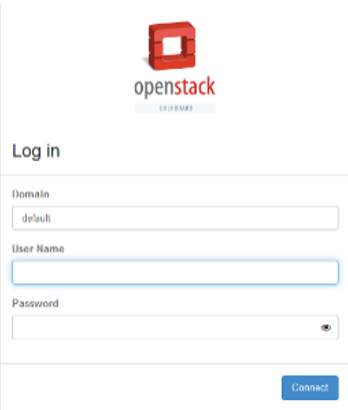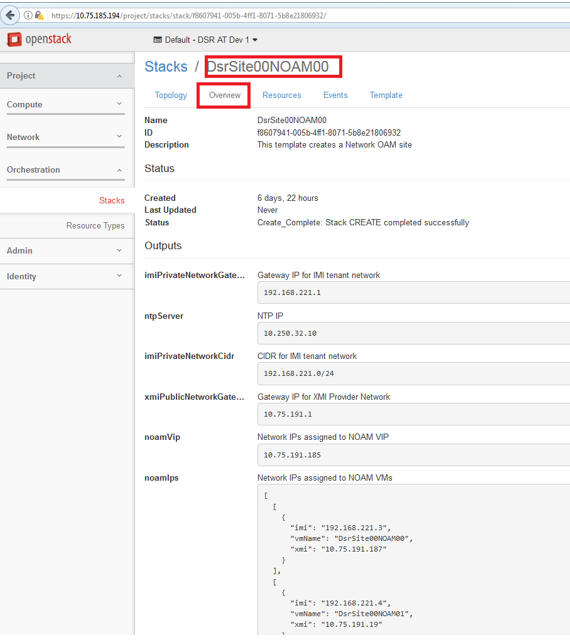- DSR Cloud Installation Guide
- Software Installation Using HEAT Templates (OpenStack)
- Deploy HEAT Templates
4.3 Deploy HEAT Templates
This procedure details how to deploy HEAT templates to create NOAM and Signaling stacks.
All the respective infrastructures have to be up and running. The required input files are available.
- Log in to the OpenStack CLI.
- Prepare the input files required for the deployment.To create NOAM and signaling stacks, provide these input files as parameters while deploying the HEAT templates.
Template Files
With respect to the deployment scenario decided in Prepare OpenStack Template and Environment Files the template files for NOAM and signaling stacks have been already determined.
Environment Files
With respect to the deployment scenario decided in Prepare OpenStack Template and Environment Files the environment files for NOAM and signaling stacks have been already determined.
Parameter Files
The parameter file for NOAM has already been created in Create OpenStack Parameter File for NOAM. The parameter file for signaling has already been created in Create OpenStack Parameter File for Signaling.
- Run the OpenStack command to create NOAM stack using the three input files.
Ensure the template and environment files are selected with respect to NOAM
stack as in Prepare OpenStack Template and Environment Files.
openstack stack create -e <EnvironmentFileForNOAM.yaml> -e <ParameterFileForNOAM.yaml> -t <TemplateFileForNOAM> <NOAMStackName>Example for VIP scenario:$ openstack stack create -e dsrResources_provider.yaml -e SinglesiteProvider_Site00_NetworkOam_Params.yaml -t dsrNetworkOam_provider.yaml SinglesiteProvider_Site00_NetworkOam - Run the OpenStack command to create signaling stack using the three input
files. Make sure the template and environment files are selected with respect to
signaling stack as per in Prepare OpenStack Template and Environment Files.
openstack stack create -e <EnvironmentFileForSignaling.yaml> -e <ParameterFileForSignaling.yaml> -t <TemplateFileForSignaling> <SignalingStackName>Example for VIP scenario:$ openstack stack create -e dsrResources_provider.yaml -e SinglesiteProvider_Site00_SignalingNode_Params.yaml -t dsrSignalingNode_provider.yaml SinglesiteProvider_Site00_Signaling - Verify the stack creation status.
- Run this command to see the stack creation
status.
$ openstack stack show <stackname>
It takes about two minutes to complete the creation. - Run the command again to verify the
status.
$ openstack stack show <stackname>
- Run this command to see the stack creation
status.
- Retrieve required IPs from created stacks.
- Log in to the OpenStack GUI with valid credentials.

- Navigate to Project, and then Orchestration and click Stacks.

- Select the stack you created (<stackname>) and click
Overview to see the IP details of the
stack.

Note:
- All NOAM IP information displays in the NOAM stack (<NOAMStackName>).
- All signaling IP information displays in the signaling stack (<SignalingStackName>).
- Retrieve the IP details for DSR configuration.
- Log in to the OpenStack GUI with valid credentials.